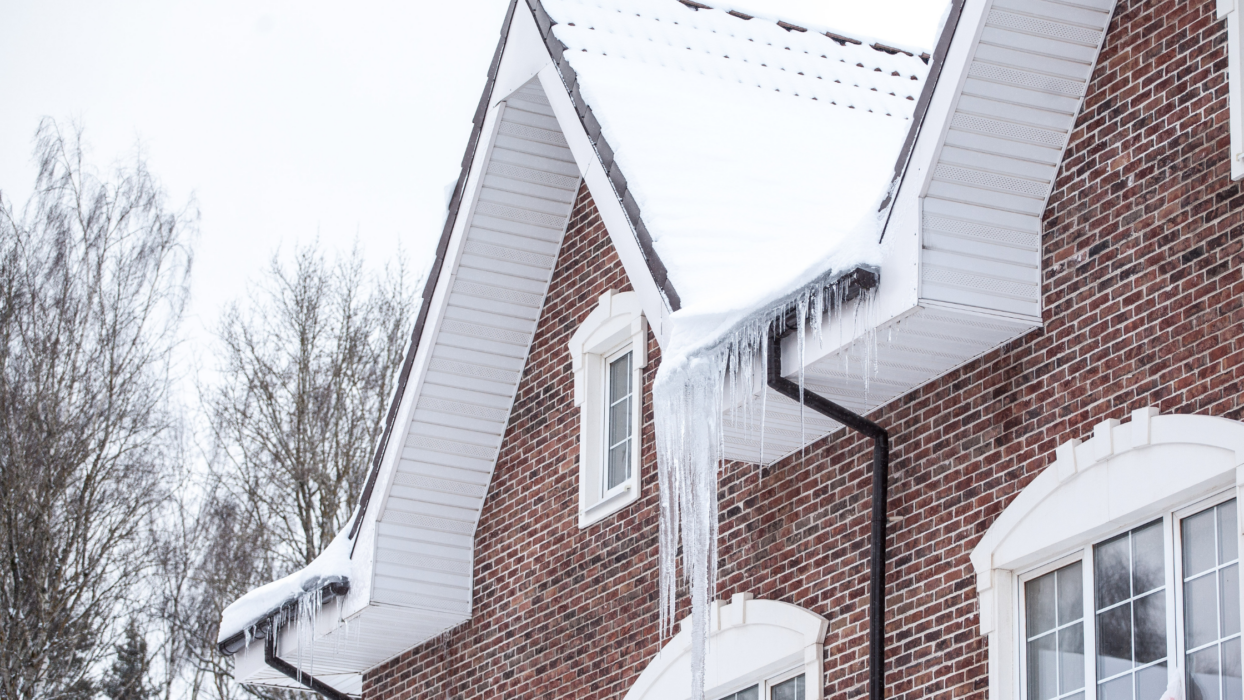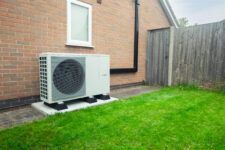
How to deal with frozen and burst pipes
As soon as outdoor temperatures hit 0°C or below, your pipes could freeze. So knowing how to deal with frozen pipes is essential. If not addressed quickly, they could disrupt your water supply, damage your home and lead to costly repairs.
We’ll show you how to recognise, manage, prevent and who to contact in the event of frozen pipes in your home so you can keep disruption, unexpected damage and costs to a minimum.
Why Frozen Pipes Are a Problem
When water freezes inside a pipe it expands. The pressure it puts on the outside of the pipe can cause it to burst. Burst pipes can cause all manner of disruption and damage to your home and belongings. In some cases, it can render your whole heating system inoperable.
The cost of a burst pipe repair can be as high as £9,000 depending on its location and the complexity of getting access to it. So identifying when a pipe might freeze and taking necessary steps to mitigate it happening is the best way to avoid this problem and cost.
How to Identify Frozen Pipes
Frozen pipes don’t always burst, but they do show tell-tale signs of when there might be an issue. Here’s what to look out for.
- Reduced water flow: If water isn’t coming out of your taps or is trickling slowly, this might be an indicator that it’s about to freeze.
- Frost on pipes: Visible frost or ice build-up on exposed pipes is a clear indicator.
- Unusual noises: Gurgling, bubbling or whistling sounds in your plumbing could mean ice is restricting water flow.
- Sink is clogged: If your sink isn’t draining properly, this could be an early sign, especially if there are no noticeable blockages.
- Toilet flushing slowly: Your toilet flushing slowly or less effectively can be a sign of a frozen pipe.
- Boiler won’t turn on: If you’ve eliminated other causes and your boiler still won’t fire up, a frozen pipe could be the cause.
If you are experiencing any of the above in your property, we suggest you start your frozen pipe troubleshooting by checking pipes in unheated spaces first. Check lofts, garages, basements or outside, as these are probably the most likely offenders, before moving onto pipes inside your home.
What to Do If Your Pipes Freeze
If you find a frozen pipe, here are some things you can do to limit the disruption, damage and cost incurred.
- Turn off the water supply: Find your main stopcock and shut off the water to prevent flooding in case the pipe bursts. Familiarise yourself with where your main stopcock is ahead of any potential issue as acting swiftly is very important.
- Open all the affected taps: This will release pressure and allow water to flow once the ice melts.
- Thaw the pipe gradually: Some of the safest ways to thaw your frozen pipes include wrapping a towel soaked in hot water around it, using a hair dryer on a low setting or putting a portable space heater next to it. Never use open flames or boiling water to thaw pipes, as this may thaw it too quickly and create even more damage.
- Check for leaks: Survey the affected area as thoroughly as you can to check for leaks, remove any electricals and turn off the switchboard if there is a leak near a wall socket.
What to Do If a Pipe Bursts
If the worst should happen and your pipe actually bursts, then follow these steps:
- Shut off the water and heating systems: This will prevent further leaks.
- Contain the leak: Use buckets and towels to manage leaking water. Move furniture, electrical items and valuables away from the affected area.
- Drain the system: Open all taps to empty the pipes of remaining water.
- Call a plumber: Get a qualified plumbing professional to fix the pipe and restore your system.
- Contact your insurer: If you have suffered any damage or found that larger repair works are needed, contact your home insurer as soon as possible to see how they can assist you.
Preventing Frozen or Burst Pipes in the Future
Knowing how to stop pipes freezing is essential, as prevention is always better than cure. To avoid dealing with a frozen or burst pipe in your property, here are some easy, cheap steps you can take:
- Insulate pipes: Wrap exposed pipes in pipe lagging or insulation foam, especially in lofts, garages, or external areas. Don’t forget to insulate water tanks as well.
- Allow warm air to circulate: Open cupboard doors under sinks and other similar spaces to let warm air reach pipes that might be susceptible to cold.
- Maintain your boiler: Regularly service your boiler to make sure it’s working efficiently. A fully functioning heating system will reduce the chances of pipes freezing.
- Keep the thermostat consistent: Never have your thermostat completely off, setting your thermostat to a minimum of 7°C will go some way to preventing your pipes freezing.
- Fix leaks and drips: Repair leaking taps swiftly to avoid water pooling and freezing in external drains.
Prepare Your Pipes for Winter
Frozen or burst pipes don’t have to spell disaster. Take some time to assess your property and use the above preventative measures to tackle any issues before they arise. Remember, knowing where your stopcock is and getting your pipes insulated can make all the difference.
Custom Heat offers repairs for burst pipes alongside heating system maintenance that can help prevent frozen and burst pipes. Contact us to make an appointment.


